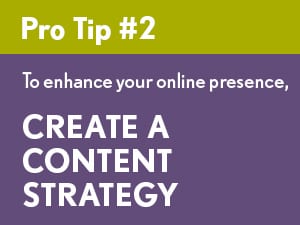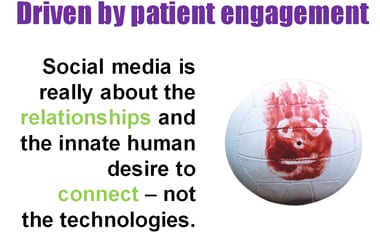Healthcare Marketers: Develop a Digital Content Strategy to Enhance Your Online Presence
 This week in our Healthcare Branding Series, let’s focus on the importance of digital content strategies.
This week in our Healthcare Branding Series, let’s focus on the importance of digital content strategies.
The meteoric rise of the internet, social networks and mobile browsing has changed how healthcare consumers seek out information. For healthcare marketers to reach audiences with meaningful, helpful information when and where people are looking for it, it’s critical to have a content strategy. Besides providing information consumers want and need, your online content should aim to boost search engine optimization (SEO) and enhance the user experience by providing answers to questions people are asking.
The good news: online health information is in high demand. According to the Pew Research Internet Project, 72 percent of internet users say they’ve searched for medical information online. Among them, 77 percent started with a search engine as opposed to a specific website. To boost your search rankings, make sure your website provides helpful, patient-centric information, and integrate your online content across multiple channels. While practice details and information about your services are valuable, content that answers patient questions will attract higher search engine traffic. To further enhance your online presence, create pay-per-click and other digital ad campaigns that link to topic-specific (and keyword-driven) web pages, or to campaign landing pages with clear calls to action like schedule an appointment, sign up for a class or newsletter, take a tour, or attend an event.
Online videos are also very popular in the healthcare space, so they’ve become a must-have for many successful web and social content strategies. Videos are so popular and highly regarded among consumers seeking information that YouTube is the second largest online search engine. In fact, according to Google, YouTube traffic to hospital websites increases 119 percent year over year. Simply put, videos offer a great opportunity to improve SEO and expand your reach.
In short, your content should fulfill your customers’ needs. If you’re not sure what information your customers want, check back next week when we discuss how to learn about your audience by listening and engaging with them on social media.
We encourage you to check out our other topics in this series:
- Living your healthcare brand
- Listening and engaging through social media
- Aligning your marketing budget with strategic initiatives
- Stepping outside your comfort zone
To discuss how we can we deliver content marketing excellence across all channels, contact us today.
Top Digital Marketing Agencies
DesignRush.com
TopMarketingCompanies.com

 Later this week, I will moderate an interactive panel for
Later this week, I will moderate an interactive panel for 